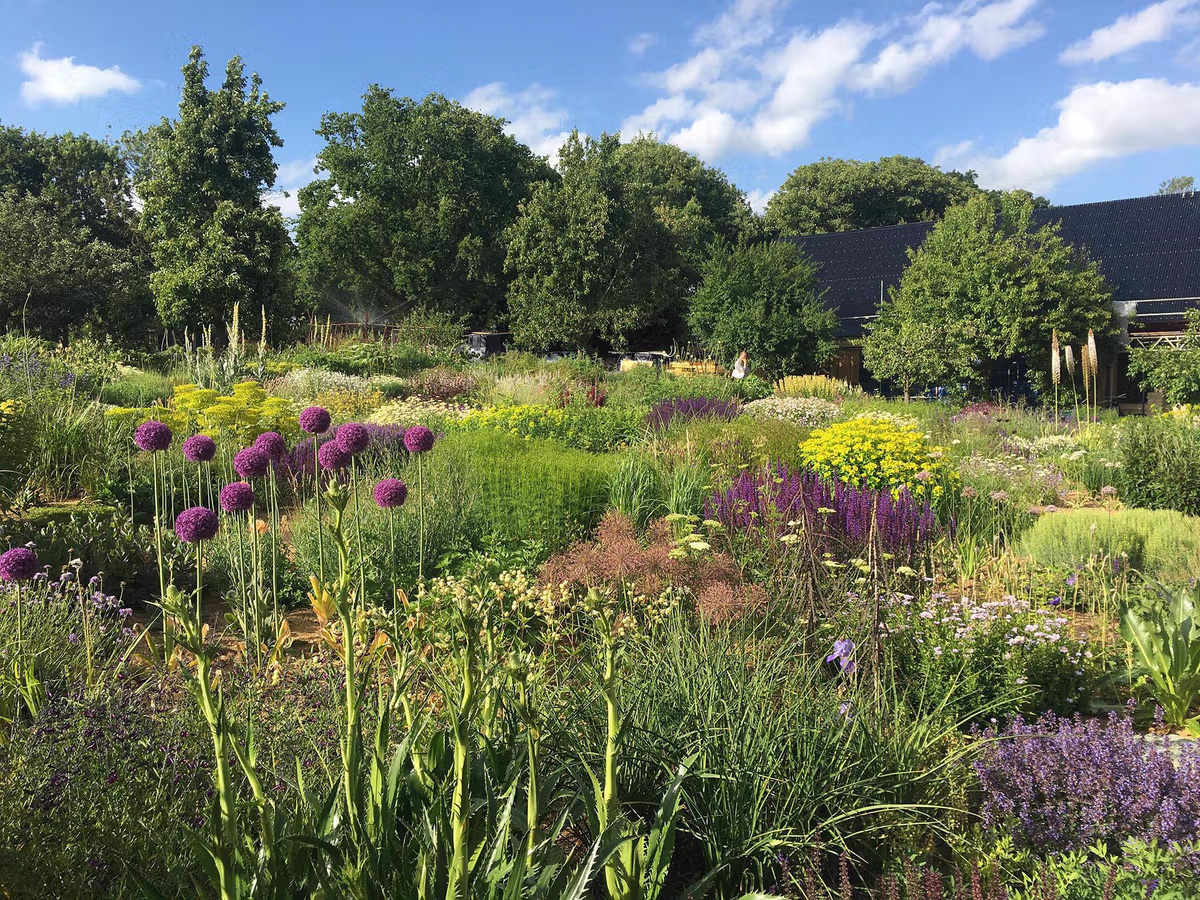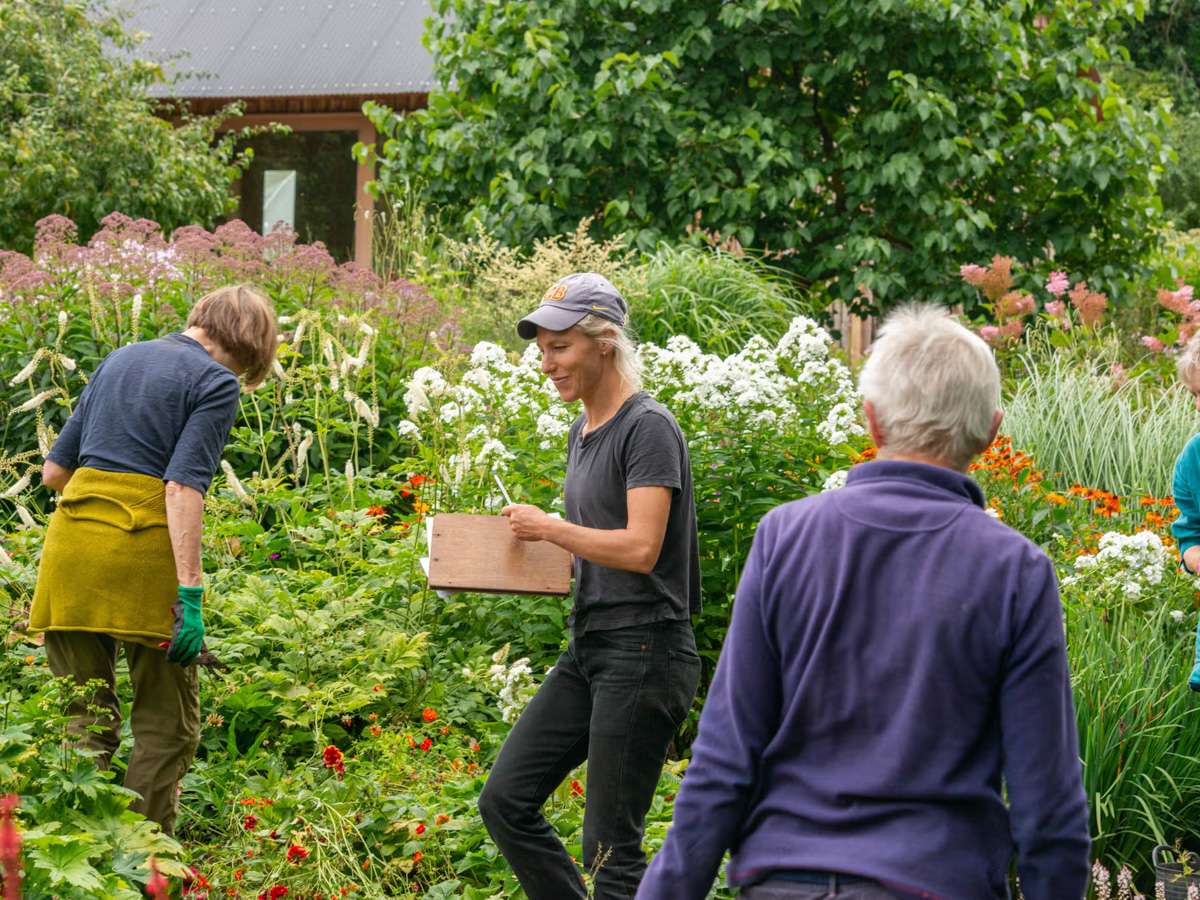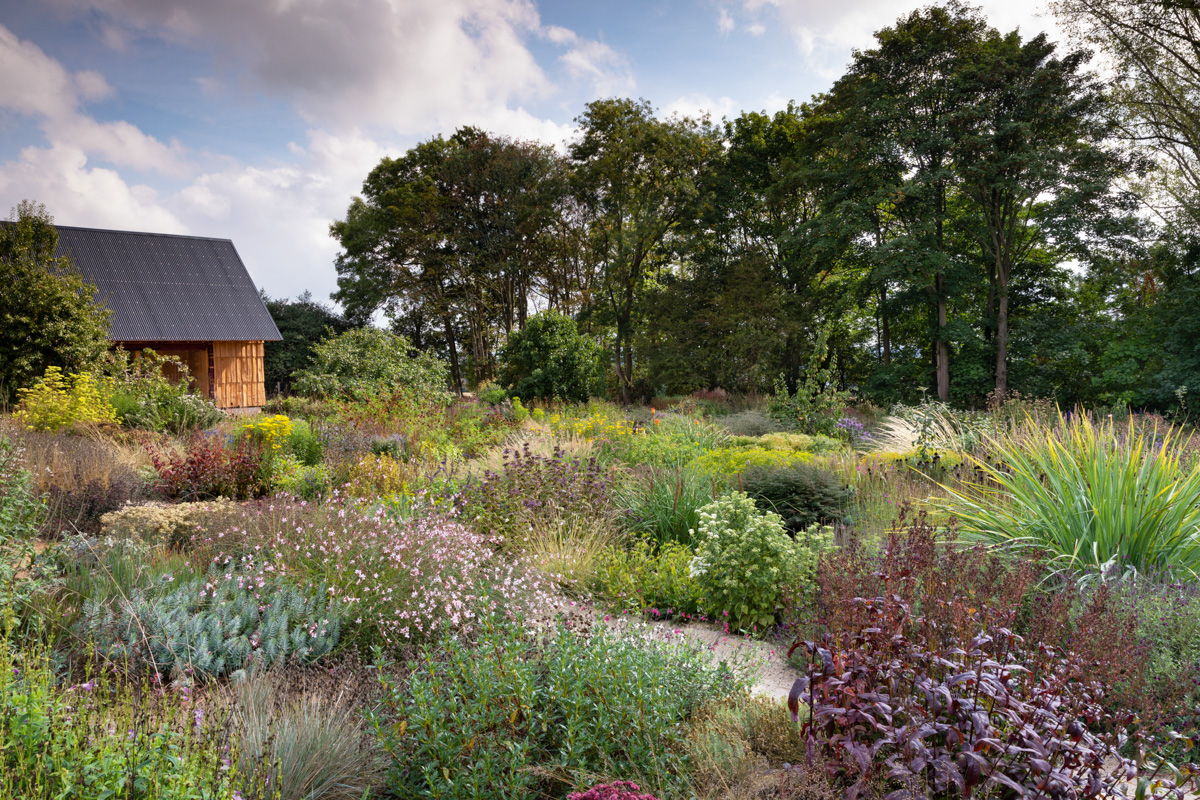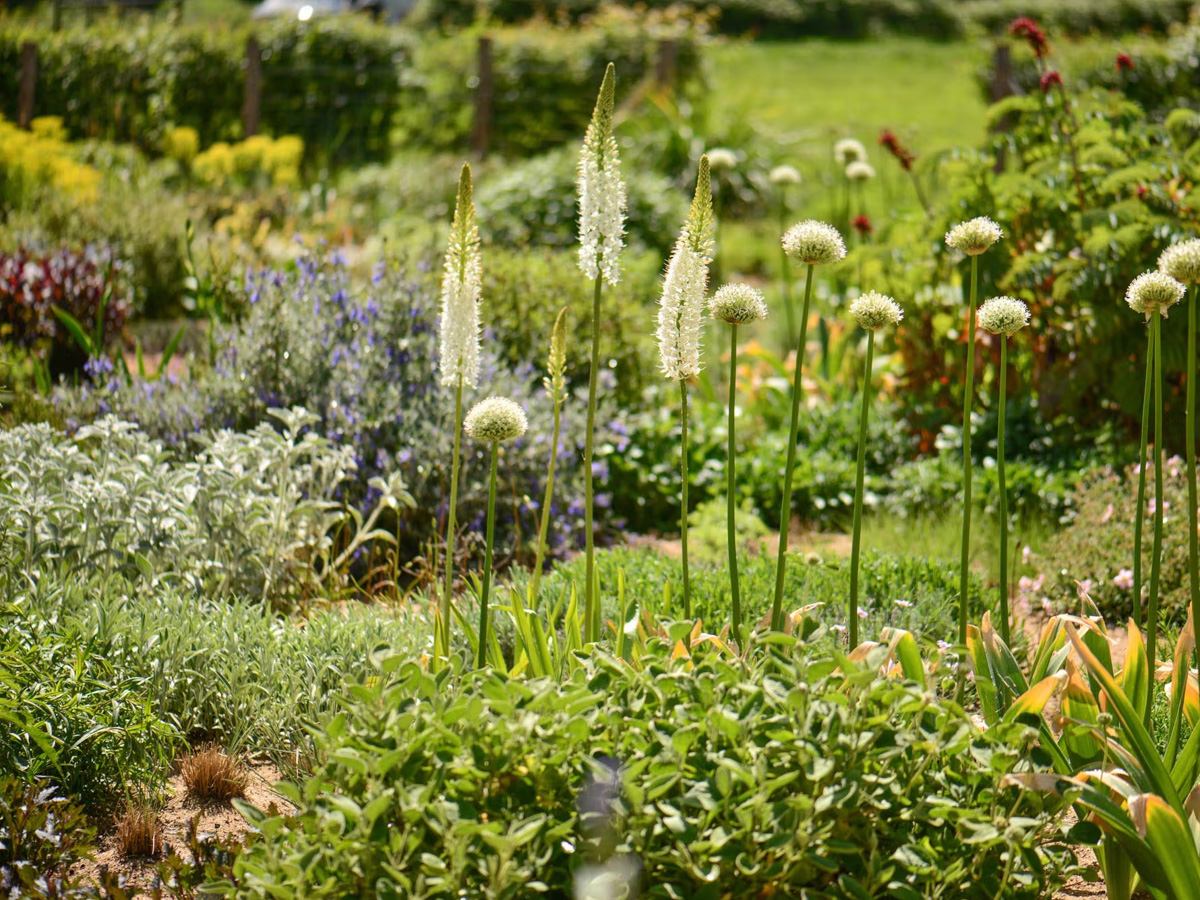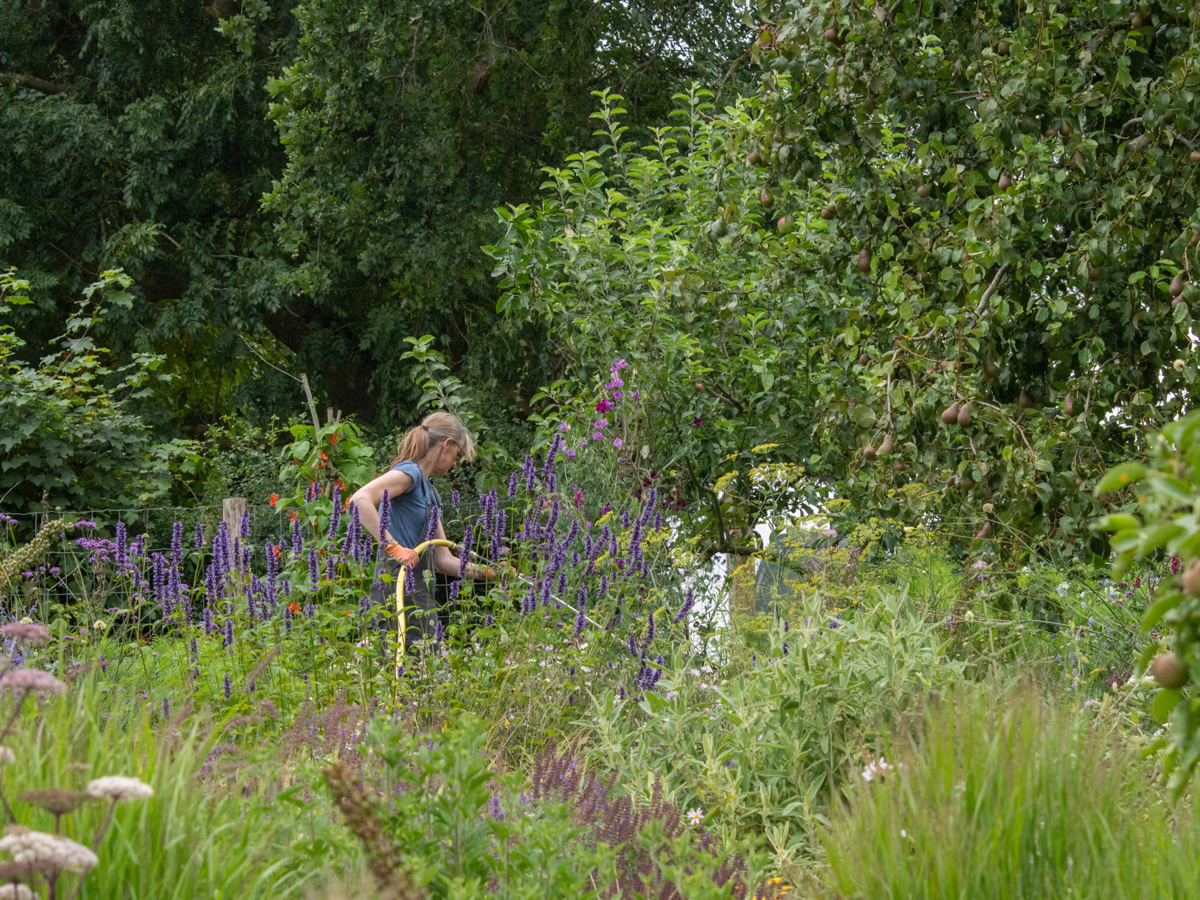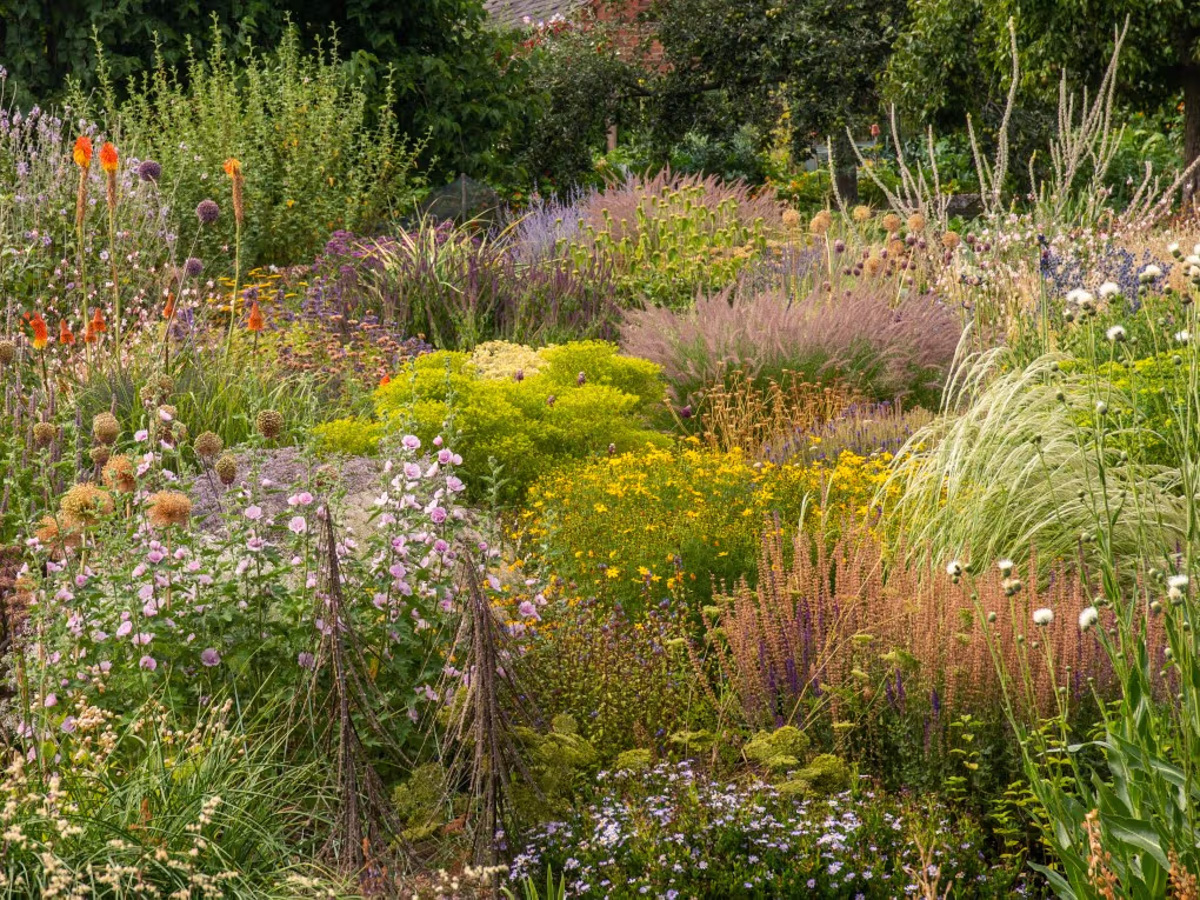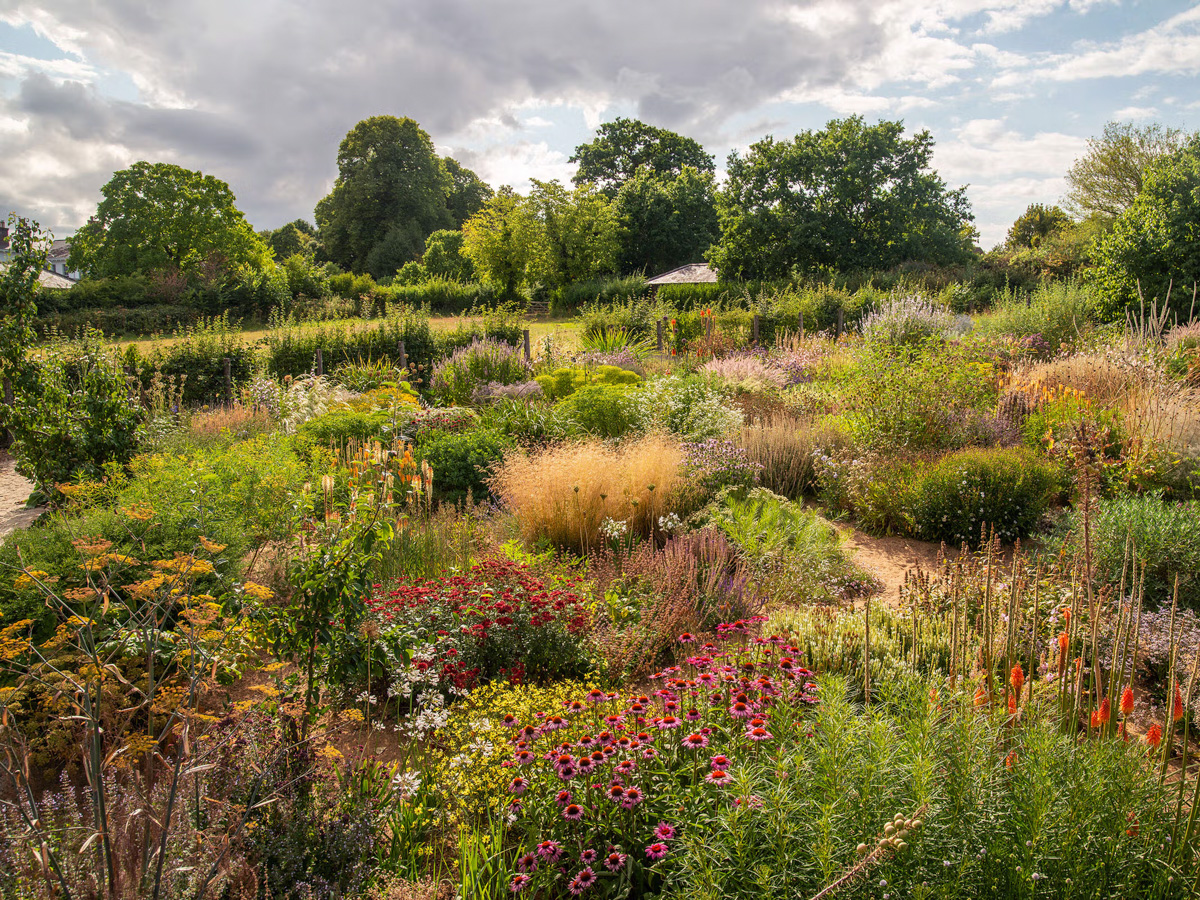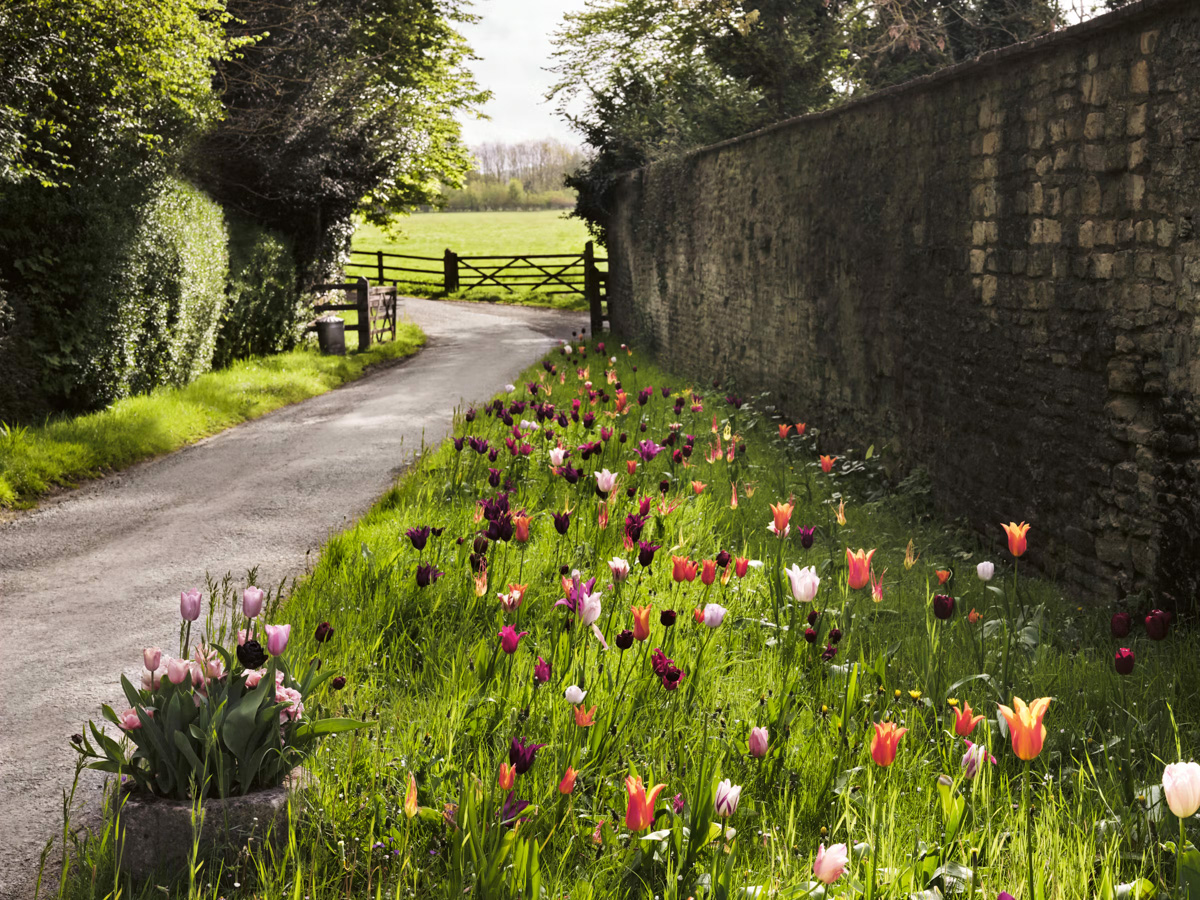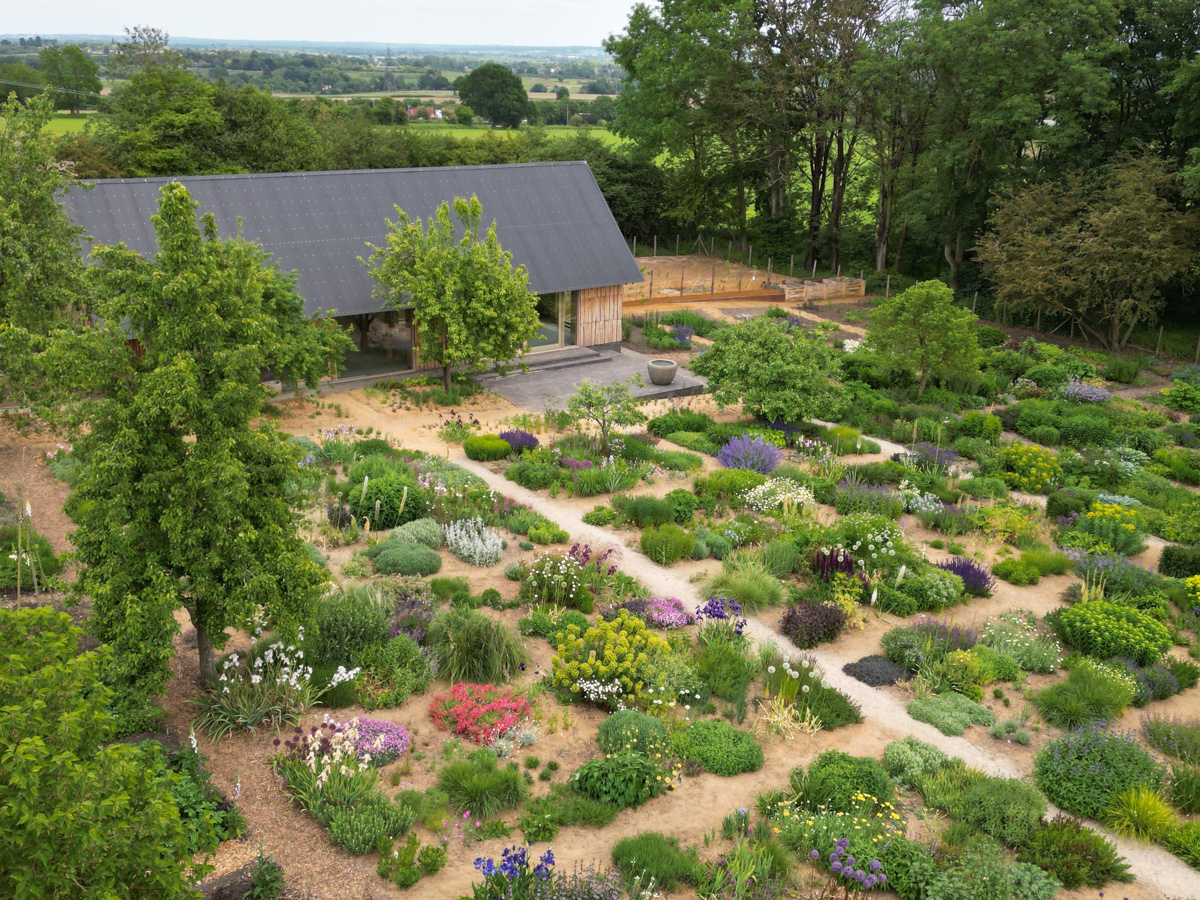
Serge Hill Project: an experimental garden design
- Photographs by Jiaji Wu
In the heart of Hertfordshire, England, lies Serge Hill, an estate that has witnessed generations of the Stuart-Smith family since 1927. It is here that Tom Stuart-Smith, renowned landscape architect, and his wife, psychiatrist and psychotherapist Sue Stuart-Smith, have brought to life an initiative that fuses nature, creativity and wellness: a special garden design, the Serge Hill Project.
This non-profit project, formally established as a Community Interest Company (CIC) in 2023, sits on a one-acre former orchard within the family property.
At the center of this space stands the Apple House, a building designed by Ben Stuart-Smith, son of Tom and Sue, and a member of the Okra architecture and design collective. Constructed with natural materials such as hempcrete walls (a mixture of hemp and lime) and clad with oak from nearby forests, the Apple House stands out not only for its aesthetics, but also for its commitment to sustainability. The building serves as an educational and resource center for local schools, youth organizations, mental health associations and residents interested in gardening.
This experimental garden houses more than 1,600 varieties of plants, mainly herbaceous perennials and bulbs, each assigned to a specific square meter. Arranged in a grid, these plants allow students, gardeners and designers to observe their characteristics and behaviors up close. The gently sloping lay of the land has been exploited to place drought-tolerant plants at the top, where conditions are drier and sunnier, while species that prefer wetter soils are placed at the bottom. This thoughtful approach to garden design not only allows for efficient organization, but also a natural harmonization of the landscape.
The project also collaborates with the Sunnyside Rural Trust, a charity that offers horticultural training to people with disabilities, providing an inclusive and therapeutic space. Serge Hill Project is, in essence, a living experiment in how garden design can transcend the aesthetic to become a driver of social transformation and wellbeing.

